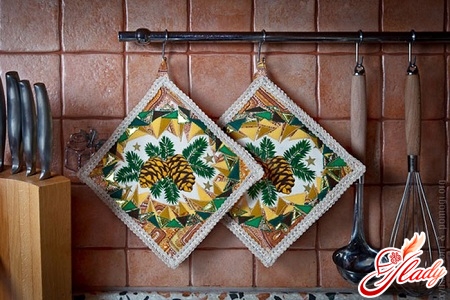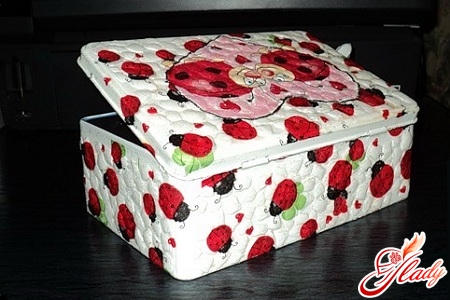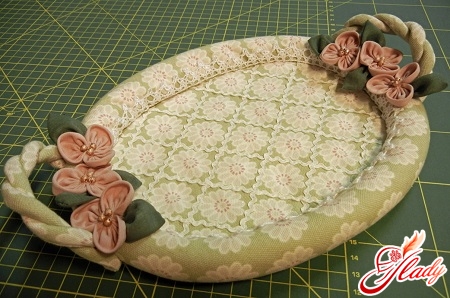 Patchwork is considered internationala type of handicraft. Mosaics from scraps of fabric were folded in the countries of the Ancient East, patchwork was incredibly popular in old Russia, and this technique was used in Europe. And although England is considered the official birthplace of patchwork, Japanese patchwork is also known in the world of patchwork. What is so remarkable about this type of patchwork, and what is its history? Let's figure it out.
Patchwork is considered internationala type of handicraft. Mosaics from scraps of fabric were folded in the countries of the Ancient East, patchwork was incredibly popular in old Russia, and this technique was used in Europe. And although England is considered the official birthplace of patchwork, Japanese patchwork is also known in the world of patchwork. What is so remarkable about this type of patchwork, and what is its history? Let's figure it out.
From the history of Japanese quilting
Initially, patchwork in its pure formJapan did not use it. True, in some Japanese monasteries, warm quilted jackets were sewn for monks from square patches symbolizing rice fields. Basically, Japanese patchwork sewing existed in the form of quilting. By the way, such sewing had a special meaning: Special stitches (forward needle) connected several layers of fabric overlapping. New fabrics were placed on old ones and thus material for clothing was saved. As a result, geometric patterns typical of Japanese sewing were obtained. At the same time, traditional Japanese futon pillows were sewn using the patchwork technique. Again, everything was done for the purpose of saving. Futon was a fairly expensive bedding item. Only wealthy Japanese could afford such pillow-mattresses, and they were used for so long that the fabric wore out. Then the worn spots on the futons were covered with new patches of fabric, and the pillows themselves began to look like new. The emergence of real patchwork in Japan is due to the same circumstances as the emergence of patchwork in England. When politicians limited (and in some places even banned) the import of Chinese fabrics, textiles became extremely scarce. But for Japan itself, of course, such a policy had favorable consequences: the country began to produce its own fabrics. However, the tradition of economical use of fabrics had already become firmly established in the life of the Japanese. Not only futons were made of patchwork; new clothes, called komono, were sewn from scraps of old kimonos. And along with this, a new type of textile handicraft, kinusaiga (patchwork without a needle), emerged. The peculiarity of this handicraft was a unique combination of painting and work with fabric. With the help of carefully selected silk scraps and wooden boards, real picturesque pictures were painted. To do this, the drawing or plot of the future canvas was transferred to wood, grooves were cut along the outline of the drawing, and individual elements of the drawing were covered with rags, like paints, tucking the edges of the rags into the cut grooves. True, this type of handicraft did not pursue applied, but exclusively creative goals.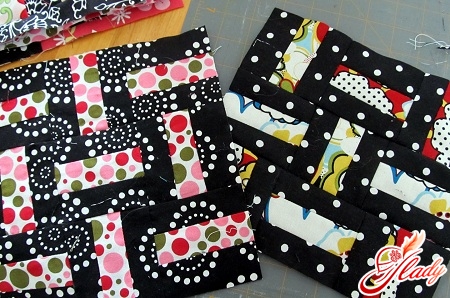
Features of Japanese patchwork
For an amateur in patchwork sewing, patchwork from Japan is no different from traditional English sewing. However, this outlandish technique has its own characteristics and distinctive features:
- First, Japanese patchwork is characterized by the simultaneous use of patchwork and stitching.
- Secondly, the drawings in Japanese patchwork differan abundance of colors. And the symbol of this handicraft was the blossoming flowers. However, geometric ornaments that symbolize rice fields are also characteristic of Japanese patchwork sewing.
- Thirdly, this needlework differs usedin it with tissues. In contrast to the traditional patchwork, where they mainly work with cotton fabrics, silk is preferred in Japanese quilting.
- Fourthly, in Japanese patchwork sewing, Sasha's special technique is used - embroidery with a "forward needle" stitch.
So, the characteristic features of JapanesePatchwork can be called a combination of quilting with patchwork, the use of predominantly silk fabrics and patterns in the form of flowers and geometric ornaments.
Sashiko shoe
The traditional nature of quilting in Japanese patchwork hasits historical roots. Initially, quilting was used for sewing multi-layered warm blankets and clothes. Then, suddenly, it turned out that quilted clothing successfully acts as military armor. Well, quilted armor became an integral part of the ammunition of Japanese warriors: such "bulletproof vests" perfectly protected from a glancing blow of a sword and arrow. In fairness, it should be noted that quilted armor was worn not only by Japanese warriors, but also by soldiers of China, Korea and India. The quilting in Japanese patchwork also differs in technique. Traditionally, the sashiko technique with thin dotted lines of quilting is used for Japanese quilts. Moreover, such quilting does not necessarily have to be rectilinear. Any patterns are acceptable: geometric, curvilinear, floral and abstract. The quilting can be done with a contrasting thread on a single-color fabric, can complement an applique or add relief to a patchwork fabric. The main condition is equal length of stitches, exceptional accuracy of work and laconicism of the pattern.
Sewing yosegire
Patchwork in Japan was also endowed withspecial meaning. Extending the life of old fabrics was considered an exercise of the spirit, and patchwork garments were given as a sign of a wish for long life. In addition, the history of Japanese patchwork is closely connected with the Shinto religion, which endowed all animate and inanimate things with a soul. Fabrics and clothes in Japan have always been considered of special value, acted as a reward for good service and even as money. And for Japanese women, expensive silk meant the same thing as precious jewelry for European women. Due to the ban on wearing clothes made of expensive fabrics by representatives of the merchant class, a new fashion was invented, called "hidden elegance". In accordance with the laws of this fashion, expensive clothes were hidden under other (more modest) ones, or scraps were used for sewing them instead of whole pieces. This type of sewing was called yosegire (sewing pieces). This sewing became fashionable not only as a way to extend the life of the fabric, but also became a national decorative and applied art. The scraps were folded into patterns, first by chance, and then purposefully. Then these patterns began to be supplemented with applique, then they moved into the art of painting porcelain, and then they combined with sashiko embroidery, turning into Japanese patchwork. What is remarkable. Fashionable crazy patchwork is a European interpretation of Japanese patchwork: Japanese fabrics are woven so skillfully that they seem to be decorated with rich embroidery. When at the end of the nineteenth century at the exhibition of Japanese culture in Philadelphia, screens made of brocade scraps were presented, many ladies decided that the pieces of silk fabric were embroidered. This idea was borrowed for the manufacture of crazy quilts, which began to be decorated with embroidery.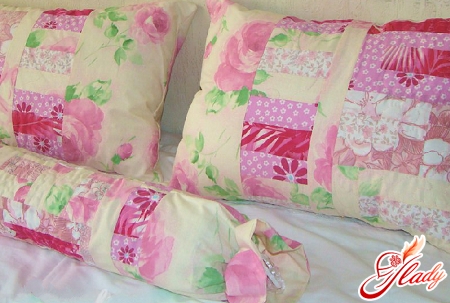
Handmade
A truly unique feature of Japanesepatchwork remains handwork. Most Japanese women do not use sewing machines because they are used to doing everything “for real”. And what could be more real than handwork? That is why traditional Japanese quilts are assembled, sewn and quilted exclusively by hand. In addition, “recycling” remains popular in Japan – re-sew old things into new ones. And this technique remains part of Japanese patchwork. In general, Japanese patchwork is included in the category of fine arts: it does not have the simplicity of English patchwork, the roughness of American quilting or the recklessness of crazy patchwork. Elegant patterns, fine work, light fabrics and hand execution distinguish this type of patchwork from all similar techniques. Here, too, the Japanese managed to distinguish themselves, having learned to create something sublime from something completely ordinary and mundane. An amazing country and an amazing culture! We recommend reading:





